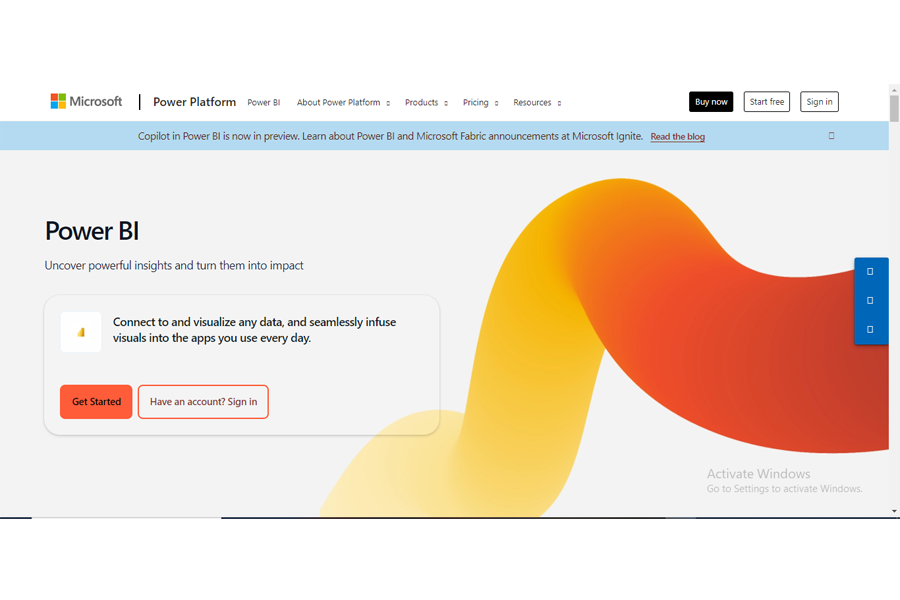According to Forbes, you are 23 times more likely to acquire new customers with data analytics than without. As a result, securing tools for data analytics and the expertise of a data analyst are necessary for your success.
Given that Nigeria is Africa’s largest economy, you need to leverage the vast data pool available for your ecommerce analytics. Over 50% of the population are youths, so more people are interested in the internet. Therefore, failing to harness the power of data analytics would be a missed opportunity.
Data analysts extract meaning from data. Data analytics is the process of uncovering helpful patterns and predictions after data analysis. The aim of data analytics lies in helping businesses gain actionable insights to guide strategic decisions and fuel growth.
In this guide, we will expose some of the most essential tools for data analytics and tips in Nigeria.
The Importance of Data Analytics in Ecommerce Success
There are four types of data analytics: descriptive, predictive, and prescriptive. Each involves stages such as data collection, processing, and analysis.
Initially, data analytics consists of gathering customer feedback, internal business systems, and market research data. Later on, data analytics tools and techniques like machine learning are used to process the collected data. Let’s expand on each benefit of data analytics below.
Strategic Decision-Making and Forecasting
One of the most significant benefits of data analytics and its technology is customer analytics. Analyzing data based on customer interactions can help your business see patterns and trends that impact decisions and lead to financial growth.
In business, everything is tied to profits and income, and data analytics can be used for informed decision-making and forecasting.
Improving Customers’ Experience
Data analytics can impact every area of business operations, like sales, marketing, supply chain management, and customer service. For example, data analytics can offer impressive insights into customer behaviors.
Understanding your customers affects your digital marketing strategy, tactics, pricing, and sales promotions. Keeping track of KPIs with data analytics helps you know if your latest marketing efforts positively impact your business.
Stronger Supply Chain
Data analytics can positively impact the supply chain. Firstly, it can aid the real-time monitoring of inventory levels, helping organizations optimize stock levels. It prevents overstocking or stockouts, reducing holding costs and improving overall efficiency.
Data analytics analyzes suppliers’ performance data and can help identify the most reliable and cost-effective suppliers. This allows for better negotiation, improved relationships, and a more robust supply chain.
Lastly, analyzing transportation data helps optimize schedules, reducing transportation costs, fuel consumption, and delivery times. This is crucial if your business is global.

Key Metrics to Track with Data Analytics in Nigerian Ecommerce
The first step to identifying your performance level is to track essential metrics, enabling you to identify gaps and improvement areas. You have to know what to follow and implement analytics tools to track them.
This section provides key metrics to watch if you want to start an ecommerce business in Nigeria. These metrics can help you cut through the noise and stand apart from competitors.
Conversion Rate
You can’t track growth without a conversion rate. It is the sole metric that shows how well you are performing. It tells you whether to improve your ecommerce website because it scares off potential customers.
You can use the below formula to calculate conversion rate:
Formula: Conversion rate = Number of orders / Number of unique visitors * 100
Imagine a Nigerian ecommerce store that attracts 1,000 visitors per month, with about 50 of them making a purchase. This is equal to a conversion rate of 5%. The implication of a conversion rate may differ by industry. But if you could attract 1000 people and close only 50, you should have a way to boost sales.
Average Order Value (AOV)
The Average Order Value (AOV) is a pivotal metric that reflects the average amount customers spend per order. It shows you how much each customer pays in your shop and helps you understand how much it takes to make a sale.
Let’s see the AOV formula below:
Formula: AOV = Total Revenue / Number of Orders
For example, an ecommerce website that generates N1,000,000 monthly revenue from 200 orders; the AOV would be N5,000. A high AOV indicates opportunities for upselling or cross-selling products, contributing to an increase in average order value and overall profitability.
Customer Acquisition Cost (CAC)
Data analytics can determine the Customer Acquisition Cost (CAC) in Nigeria’s ecommerce.
CAC is the cost of acquiring new customers and you can calculate it as follows:
Formula: CAC = Total marketing and sales expenses / Number of new customers
Imagine a Nigerian ecommerce business spent N100,000 on marketing and acquired 100 new customers in a month; the CAC would be N1000. This suggests that it costs N1000 to receive every new customer, which is quite expensive.
Monitoring CAC can help allocate the marketing budget efficiently and refine targeting or optimize marketing channels for increased returns.
Customer Lifetime Value (CLV)
Thinking long term, you should identify your Customer Lifetime Value (CLV). It measures the value a customer brings or will bring to your business over their lifetime after considering initial and repeat purchases and potential referrals.
Use the below formula to calculate it:
Formula: CLV = Average order value (AOV) x Number of monthly transactions x Retention period.
In a practical scenario, if a customer spends N5,000 per order, purchases every two months, and continues for two years, the CLV would be N60,000 (N5000 * 0.5 * 24). It means that, on average, a customer should bring N60,000 in revenue over their lifetime. A high CLV signifies a solid customer base and effective marketing and retention strategies.
Cart Abandonment Rate (CAR)
Several Nigerians like window shopping, but you can reduce cart abandonment by making juicer offers or improving their shopping experience. The Cart Abandonment metric measures the number of customers who abandon their carts against the Number of people who start checkouts.
Check the below formula:
Formula: Cart Abandonment Rate = (Number of Abandoned Carts / Number of Started Checkouts) * 100
Imagine a scenario where 200 customers started the checkout process, but only 100 completed it; the cart abandonment rate would be 50%. This means that for every checkout started, 50% of customers did not complete it.
You can address the issues by offering incentives or improving the checkout process, enhancing overall conversion rates and revenue.
Top Tools for Data Analytics in Ecommerce for Nigerian Entrepreneurs
Regarding web analytics tools in ecommerce, small businesses can use Google Analytics for quick and free insights. Conversely, they can use data analytics tools like Hotjar to provide visual insights into customer behaviors.
However, if you want a more comprehensive data analysis, data analytics tools like Microsoft Power BI, Excel, and R can go a long way. In the next lines, we will review each of these tools in detail.
Microsoft Power BI
is a leading business intelligence platform that supports dozens of data sources. This tool allows you to create and share reports, visualizations, and dashboards effortlessly. To streamline distribution, you can bundle a set of dashboards and reports into a convenient Power BI app.
Moreover, Power BI doesn’t just stop at visualizations; it lets you dive into the world of automated machine learning models and seamlessly integrates with Azure Machine Learning.

R
R is an open-source programming language and computing environment focusing on statistics and compelling data visualization. Offering a variety of graphical tools and access to a repository boasting over 15,000 open-source packages, R provides a comprehensive toolkit for loading, manipulating, modeling, and visualizing data.
This environment caters to technical analysts with programming skills who can construct any form of data analysis. Therefore, alternative solutions might be more suitable for users lacking programming proficiency.
Microsoft Excel
Excel stands as the world’s most renowned spreadsheet software. It is used for data wrangling and reporting. Excel is ideal for comprehensive data analysis with robust calculations and graphing functions. Regardless of your specialization and the other data analytics tools you employ, Excel remains a fundamental asset in the data analytics field.
However, it’s important to acknowledge certain Excel limitations, such as costs, potential calculation errors, and challenges in handling big data. Notwithstanding, Excel remains indispensable due to its versatility and user-friendly interface.
Jupyter Notebook
Jupyter Notebook is another open-source web application that allows business owners to create interactive documents. Within a browser, it can support a variety of languages (about 40), including popular choices like Python and R. Additionally, it can integrate with big data analysis tools such as Apache Spark and offers broad outputs like HTML, images, videos, and more.
However, every tool has limitations. For example, the Jupyter Notebook document has poor control of its version, and tracking changes and collaboration is problematic. Consequently, it may not be optimal for development and intensive analytics work, but dedicated Integrated Development Environments (IDEs) are better suited for these tasks.
Jupyter Notebook isn’t self-contained, meaning you have to provide additional assets, such as libraries or runtime systems, to those with whom you share documents, which can be frustrating. On the other hand, when it comes to presentation and tutorial, it will remain an invaluable data science and data analytics tool.
SAP BusinessObjects
SAP BusinessObjects offers various business intelligence applications for data discovery, analysis, and reporting. It is aimed at non-technical business users who cannot perform complex analysis.
SAP BusinessObjects integrates with Microsoft Office products, allowing business analysts to switch between applications such as Excel and BusinessObjects reports quickly. It also allows for self-service predictive analytics.
Using Data Analytics to Improve Customer Experience
Data analytics can be used to improve customer experience and satisfaction.
Consider the following steps:
- Outline Your Objectives: Collecting and analyzing data will be pointless without establishing your objectives and goals. Getting your objectives right helps you focus on what matters. The best way to go is to use objectives and key results (OKRs), which allows you to assign objectives to respective goals.
- Collate Consumers’ Data: Collect customer data from various sources, such as Google Analytics, customer feedback, surveys, and other analytics tools. With the outlined objectives, you can already tell where to source customer data.
- Organize Data: Data analytics tools like Microsoft Excel, Google Sheets, and Tableau can be used to organize data in a way that is easy to understand. Organizing data should be straightforward, so consider the tools listed above.
- Analyze Data: Using popular and proven analytical tools to identify patterns and trends helps draw patterns and make decisions that will positively impact your customer experience.
- Create a Strategy: During the analysis stage, you will determine whether your product needs improvement, marketing needs a switch, or the order fulfillment process lacks.
Go beyond the strategy or decision-making stage. Always reanalyze after implementing your newfound strategies. Are they working for the betterment of your business?

Leveraging Data Analytics to Optimize Your Marketing Strategy
Creating a marketing strategy without factual data leaves you in the hands of luck. However, you will see tangible and practical results if you carry out analytics and implement the information in your strategy.
However, you should remember that implementing data analytics with your marketing strategy may not lead to overnight success. It’s not a magic wand. Instead, it’s a growth phase that may be fast or slow for some. You can use data analytics to inform and optimize marketing efforts. Still, these four actionable strategies below are recommended.
Using Data Analytics to Personalize Your Customer Experience
More than 65% of consumers are happy to share their data for a more personalized experience. Data analytics can help you speak to customers on an emotional and personal level.
The best way to do so is through newsletters with platforms like Klayvio, ActiveCampaign, and Campaign Monitor, where you can send messages based on user’s actions, such as recently purchased items, browsing behavior, and abandoned carts.
You can also personalize the user’s experience by:
- Showing a personalized page to users per country or city.
- Showing popup messages to remind them of their cart.
- Showing pages depending on a previously purchased product.
When the tools and techniques required for mining big data are expensive, you can use small data mining and collection tools. Additionally, you should consider offline means for data collection.
Running A/B Tests For Optimization
A/B testing, or split testing, is a typical marketing implementation for data analytics. It is a famous method of optimizing landing pages, emails, content, and other marketing messages. About 77% of companies use A/B tests to decide the best-performing campaigns.
A/B testing reduces your guesswork. It helps you understand what works for your e-commerce store and your customers. It could be a surprise that the campaign or headline you expect to generate the fewest conversions performs the best.
For example, Wrike split-tested multiple elements on their website after a brand refresh. They found that landing pages without a floating CTA converted 42% more than those with a floating CTA, and multiple CTAs increased conversion rates by as much as ten times. Furthermore, they discovered that their website’s dark theme converted better than a light theme.
Create Relevant Content
Is it possible to sell online without content? If it is, then it is rare. What’s less popular is using data analytics to produce content, establish KPIs, and measure content ROI. According to the Content Marketing Institute, 78% of marketers measure content performance, 63% show KPIs, and 51% measure content ROI.
It’s high time you stopped creating content on vibes and started using data analytics to inform your content strategy, tactics, and plans. Listen to your customers’ data analytics tools to create more compelling content.
Keyword research is a great start, but in-depth interviews can reveal specific unspoken issues. Creating articles around such issues will attract and compel a larger audience.
Improve Buyer Personas
Without the help of data analytics, businesses sometimes draw a vague or inaccurate description of their broader persona. A buyer persona is the starting point for understanding your audience, demographics, likes, and dislikes.
Hubspot reported that websites are 2 to 5 times more efficient and easy to navigate with a buyer persona. They also can skyrocket conversion rates by 10% and email open rates by 14%.
Tips for Building a Data-Driven Ecommerce Business
Leveraging data analytics in your ecommerce and digital business strategy is not just a trend but a foundational element for success in today’s digital marketplace.
Below are vital tips for building a data-driven ecommerce business:
- Customer Segmentation: The world has moved beyond generalizing marketing messages. Imagine sending a ‘thank you for your last purchase’ message to someone who abandoned their carts. No customer would receive that and feel like you are serious. Data analytics allows you to segment audiences based on categories like demographics, purchase history, website interactions, behaviors, and preferences.
- Personalization for customer recommendations: Have you ever visited a site where you first saw a popup message with a product you wanted to buy but didn’t or forgot about? That’s precisely what you should do with your e-commerce store. With a data analytics tool, show popups related to your customers’ behaviors, including browsing history, past purchases, and product views.
- Real time pricing: Implement analytics tools and algorithms that allow your product pricing to change according to real-time market conditions, competitor pricing, and demand fluctuations. Since this is quite tricky, you should only apply the automation to specific products where real-time pricing affects sales.
By focusing on customer segmentation, personalizing recommendations, and implementing real-time pricing, you can improve customer engagement, conversion rates, and revenue.
Challenges and Solutions for Data Analytics in Nigerian Ecommerce
Data analytics is essential in Nigeria’s ecommerce, seeing that a top player like Jumia implements it. Data has been expanding at an unprecedented rate lately, but thankfully, we have tools to help collate and analyze them.
However, with the bulk of data we can now access, it becomes a challenge that just a few specialized individuals can understand and use data analytics tools. These tools require specialty and experience in statistics and computer science. You should strategically scout for talents and train them to use data analytics effectively.
Another common challenge with data analytics is network and information security. Since you will be accessing private customer information, you must adhere to The Nigeria Data Protection Regulation (NDPR) and General Data Protection Regulation (GDPR) to safeguard customers’ data.

Best Practices for Data Management in Ecommerce in Nigeria
Data analysis and decision-making are not the end.
Follow these best practices for the best ecommerce results:
- Identify your business objectives and goals: Earlier, we mentioned the importance of identifying objectives before starting data analytics activities, and the same applies to data management. The process is tedious and time-consuming; no two data points are equal. Defining objectives helps you identify what data points to prioritize and find a way to keep the most irrelevant data.
- Use a data management tool: Consider using a comprehensive Product Data Management system and a Customer Data Management system for your data management. Use an automated system to collect, organize, and analyze data. A Data management system makes it easy to secure, cleanse, filter, update, and visualize data.
- Appoint data stewards: Even though you may have set up an automated data management system, you must put an expert team in charge of data security or data governance experts to manage your data, determine the security protocols, and grant permissions to stakeholders.
To wrap it up, good data management is necessary if you’re running an ecommerce business in Nigeria. Start by knowing what your business aims to achieve. Then, pick out tools that help keep your data in check quickly. Don’t forget to have a team or person responsible for keeping your data safe and in order.
Frequently asked questions
How is data analytics used in e-commerce?
Data analytics for ecommerce is helpful in various ways. It can help an ecommerce business study consumer behavior, draw a buyer’s persona, measure the performance of marketing campaigns, and aid forecasting and informed decision-making. Data analytics can play a role in every aspect of the ecommerce business, including supply chain management and improving finances.
Which ecommerce analytics tool is the best and why?
There are several tools to track the performance of your e-commerce store, such as Microsoft Power BI, Excel Sheets, and R. Still, tools like Google Analytics (for small data) offer accessible and actionable insights into how you perform.
What is big data analytics in e-commerce?
Big data analytics for ecommerce uses Big Data and Analytics to personalize customers’ experience, improve their engagement level, and increase sales. With Google Analytics, you can tell the bounce rate, but you need to know why the bounce rate is such. Big data allows you to identify data that small analytics tools cannot.